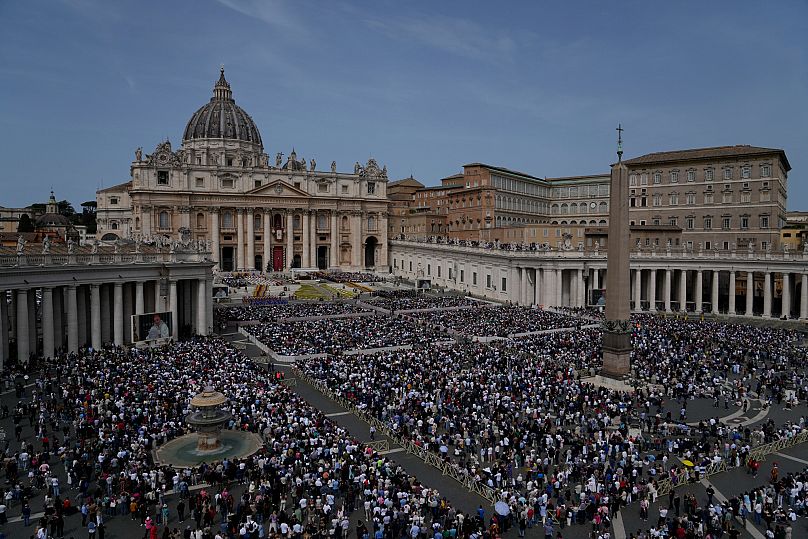The Daily Examiner.
With the death of the Pope, one of the most solemn and meticulously choreographed rituals in the Catholic Church is set in motion.
The first to be informed is the Camerlengo, the cardinal who serves as the Vatican’s acting administrator during the interregnum. It is his duty to officially verify the Pope’s death.
Following tradition, the Camerlengo approaches the Pope’s body and calls his baptismal name three times. If there is no response, the Pope is formally declared dead.
A death certificate is issued and the Papal Apartments are sealed.
Historically, this ritual was designed to prevent theft by opportunistic cardinals. Today, it serves as a safeguard for the authenticity of the Pope’s will and final instructions.
The next symbolic act is the destruction of the Ring of the Fisherman, a gold ring worn by the Pope and kissed by Catholics as a sign of reverence. The Camerlengo removes it and breaks it in two before the gathered cardinals. This not only prevents any potential document forgeries but also marks the end of the Pope’s reign.
The news of the death is then communicated through official channels.First, the Vicar General of Rome is informed, followed by the Dean of the College of Cardinals, who notifies the other cardinals. Then, the Vatican’s diplomats – apostolic nuncios – are tasked with informing foreign embassies and missions around the world.
The Pope must be buried between the fourth and sixth day after his death. A nine-day mourning period, known as the novemdiales, follows. Much of the funeral and mourning procedures are typically pre-planned by the Pope himself, with detailed instructions left behind for the Camerlengo to execute.
Fifteen days after the Pope’s passing, the papal conclave begins.
To prevent external interference, all eligible cardinals, those under the age of 80 and not excommunicated, are locked inside the Sistine Chapel. On the first day, they celebrate a Mass, then proceed to the chapel where they swear an oath to follow the strict rules governing the election.
The voting continues daily until one candidate receives a two-thirds majority.
After each round, the ballots are burned. Black smoke signals an inconclusive vote; white smoke announces to the world that a new Pope has been chosen.










